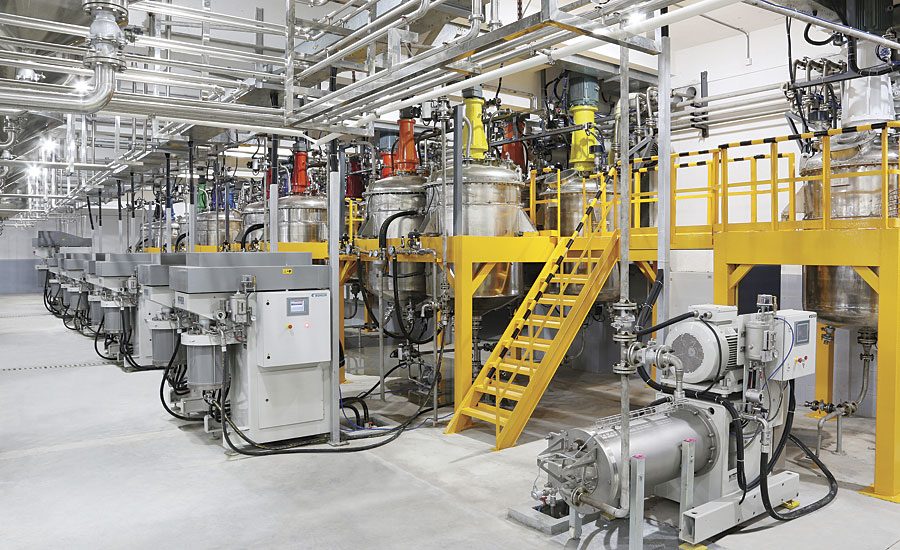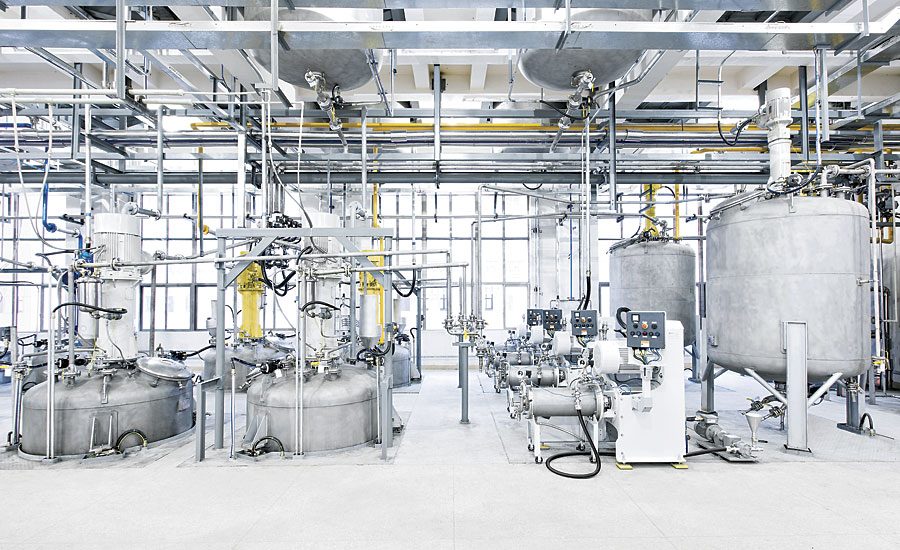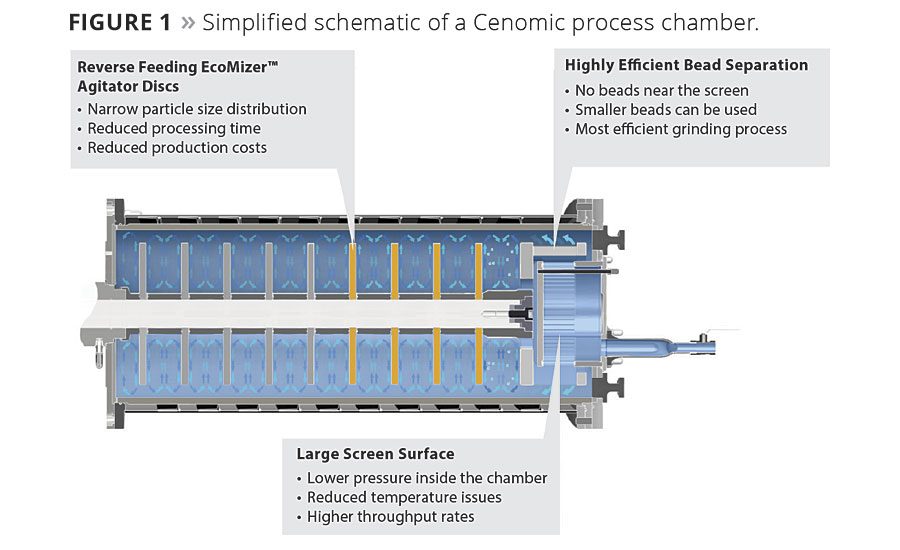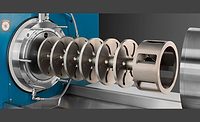Bead mills deserve the center stage in the production process of the coatings and inks industries. The quality requirements from customers are becoming ever more demanding, and the cost pressure is increasing. With standard milling approaches the profit is diminishing, and choosing cheaper raw material is causing troubles in the grinding process, such as clogging screens, out-of-range particle size distribution and longer grinding cycles. Saving on capital goods and pigments leads to the opposite effect – increased costs and quality issues. This article describes solutions that not only help fulfill the quality requirements but also reduce production costs.
The Right Milling Equipment Makes the Difference
A case study in an industrial environment confirms the importance and benefits of choosing the most suitable milling equipment and grinding media size for a specific grinding task. Bühler’s Cenomic™ full-volume bead mill incorporates patented solutions that allow higher flow capability without compression of grinding beads in the front section of the chamber. The Cenomic bead mill allows for a reduction of the specific energy requirement, a narrow particle size distribution and a higher product quality with lower grinding costs. It is highly recommended for processing high-quality products like protective coatings, paints and gravure inks. Table 1 illustrates the technical solutions the mill offers.
Overall Savings Can Be Realized
Table 2 illustrates how grinding time can be remarkably reduced. A shorter grinding time not only results in a more efficient production process, but also realizes savings in labor costs. In addition, the chart clearly states the decrease in mass-specific energy consumption only by using the right equipment.
The table points out that even with highly increased product flow rates, the same or even better dispersion quality in terms of fineness, gloss and color strength can be achieved using the full-volume bead mill. The reduced grinding time per batch has a direct impact on minimizing the grinding costs. But most important are the savings that result from the cutback in manpower, the depreciation and utilities. Furthermore, not only was the grinding time reduced, but also the specific energy amount per batch was diminished, which again results in energy costs savings.
Optimizing Each Grinding Process Step
To determine the most suitable equipment for a specific grinding process, it is important that the supplier and end user jointly discuss and develop all requirements and options regarding process and plant in advance. Bühler provides Centers of Competence (CoC) at different locations worldwide, as well as Regional Application Development and Education Centers (RADEC) – for example in Mahwah, NJ – to cover regional needs and requirements. These fully equipped facilities offer testing, analyses and scale-up. Local experts can also identify ways to optimize and economize existing processes and plants in order to ultimately increase the customers’ success and satisfy local needs.










Report Abusive Comment